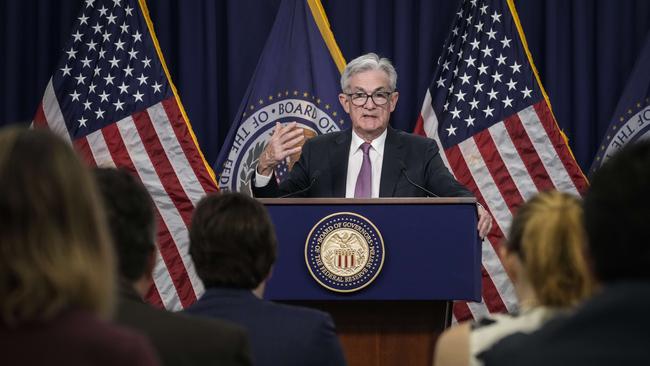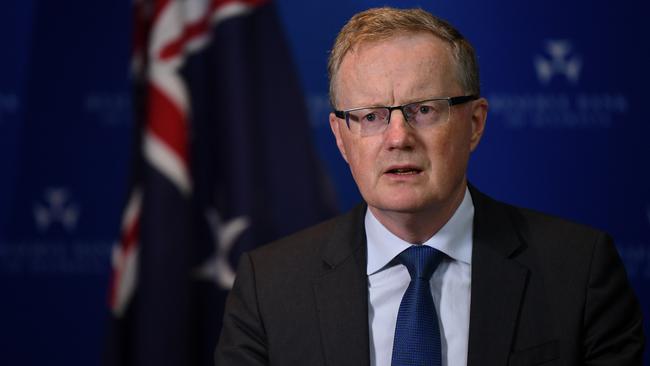Yes, trivial. Despite those hysterical howls of “fastest tightening cycles” in 30 or more years and “super-sized” and “triple-sized” official rate hikes.
Yes, the Fed’s had two 75-point hikes. Whoopee. Those and the other hikes – very, very belatedly, only this year – have taken its policy rate to all of 2.25 to 2.5 per cent.
There’s no way that could be considered “tight” even in nominal terms. That’s the sort of official rate the “old” – pre-GFC – Fed would go, briefly, down to in a serious recession.
In real terms, accounting for inflation, it’s beyond laughable to suggest that the Fed has even tightened. The rate is still super-stimulatory.
At the end of 2021, the Fed’s rate was at zero (the lower bound of its 25-point range). CPI inflation was 7 per cent. In real terms the Fed rate was a super-stimulatory minus 7 per cent.
This last week, even after the zero – all down to oil – August inflation figure, US annual inflation to August was only “down” to 8.5 per cent.
So with the Fed rate at 2.25 per cent (the lower bound), the Fed has in real terms raised its rate this year from minus 7 per cent to minus 6.25 per cent.
I say again, whoopee. It’s gone from super-stimulatory to well, super-stimulatory. The Fed’s rate and all the rates that price off it, directly and indirectly out along the yield curve, are still hugely favourable to borrowers and hugely punitive to savers.

Remember, in the US you can lock-in a 30-year fixed rate mortgage, priced off the 30-year US Treasury yield.
In Australia, at the end of 2021, the RBA’s official cash rate was 0.1 per cent. Inflation for the year was 3.5 per cent.
Now the RBA’s cash rate is up to 1.85 per cent. But inflation for the year to June was 6.1 per cent.
In real terms, over the year so far, the RBA has cut its official rate – from minus 3.4 per cent to minus 4.25 per cent; going from super-stimulatory to even more super-stimulatory.
Furthermore, the RBA expects inflation to increase to 7.8 per cent by the end of the year. It will certainly be higher than 6.1 per cent well before that, in the next print for September.
But take the RBA’s 7.8 per cent; it has now set its rate at minus 5.95 per cent relative to where it believes inflation is headed.
Restrictive? Tough? My rear end.
Now yes, I know it’s more “complicated” than simple arithmetic comparisons at points in time. We need also to contemplate the rate of change in rates; the level relative to both expected future inflation and its drivers.
And very critically, because we are so dramatically more over-borrowed, than especially pre-GFC, both borrowers and the broader economy are far more sensitive to (nominal) rate hikes.
In the 1980s and again in the 2000s, the RBA had to take its official rate above the inflation rate to take the heat out of the economy; with, as we know, “dramatic” effects in the first case; and very effective effects in the second.
This is clearly not the case now. Neither here – nor in the US – does the official rate have to go above the inflation rate. But, again, it has to go somewhat – indeed, significantly – less negative in real terms.

The question that never gets posed is why are we so much more over-borrowed? The answer is simple, and hiding in plain sight: because central banks have well and truly had their elbow on the scales, mandating that borrowers got super-cheap-cheap money (and savers got screwed).
It’s not exactly rocket science: at a 2 per cent mortgage rate you could and indeed did borrow heaps more than if you had to pay, say, 4 per cent, far less 6 per cent. Even with banks supposedly “stress testing” for rate rises.
This applied across incomes and loan sizes. But, further and critically, if you had sold property at massively inflated prices, and were re-buying – as is the case with 80-85 per cent of property buyers – this had a multiplying effect into further boosts to available loan sizes at such low rates.
Rates have been "one hand clapping". The other is the money printing.
In the US, starting with the GFC, the Fed blew its balance sheet out from $US1 trillion to $US9 trillion, buying (mostly) treasury but also real estate securities.
Our RBA, to its great credit, did not money-print through and after the GFC. It also took its rate then only down to 3 per cent, not the Fed’s zero.
But in the Covid panic, the RBA embraced bond-buying money printing. It’s “investments” blew out from $90bn in March 2020 to $544bn last week.
Both, the Fed and the RBA, are now embarked on – very, very, slow – “unprinting”; letting their bonds mature and be paid out. In the Fed’s case it’s going to be spread over the rest of the 2020s; our RBA has been rather coy.
If they persist, it will be exercises in “boiling the frog” – slowly tightening liquidity in the respective bond markets. I’m betting they and especially the Fed won’t persist. The pain will be, well, too painful.
But it gets to the heart of the matter.
Yes, rates need to rise to “fight inflation”: a cyclical issue.
But there’s also the much more profound structural issue.
This is the way zero rates and something like a $US20 trillion global money print since 2008 created the massive increases in both property and share prices; with the rich getting richer and the super-rich getting even more obscenely super-rich.
We need a “countervailing” decade of rates slightly too high and money being unprinted. And so, sustained falls in both share and property prices.








Sorry, we don’t get out of more than a dozen years of utterly irresponsible multitrillion-dollar money printing by the world’s major central banks and similarly mandated trillions of dollars of “free” money for borrowers, with just a few trivial interest rate rises from zero.